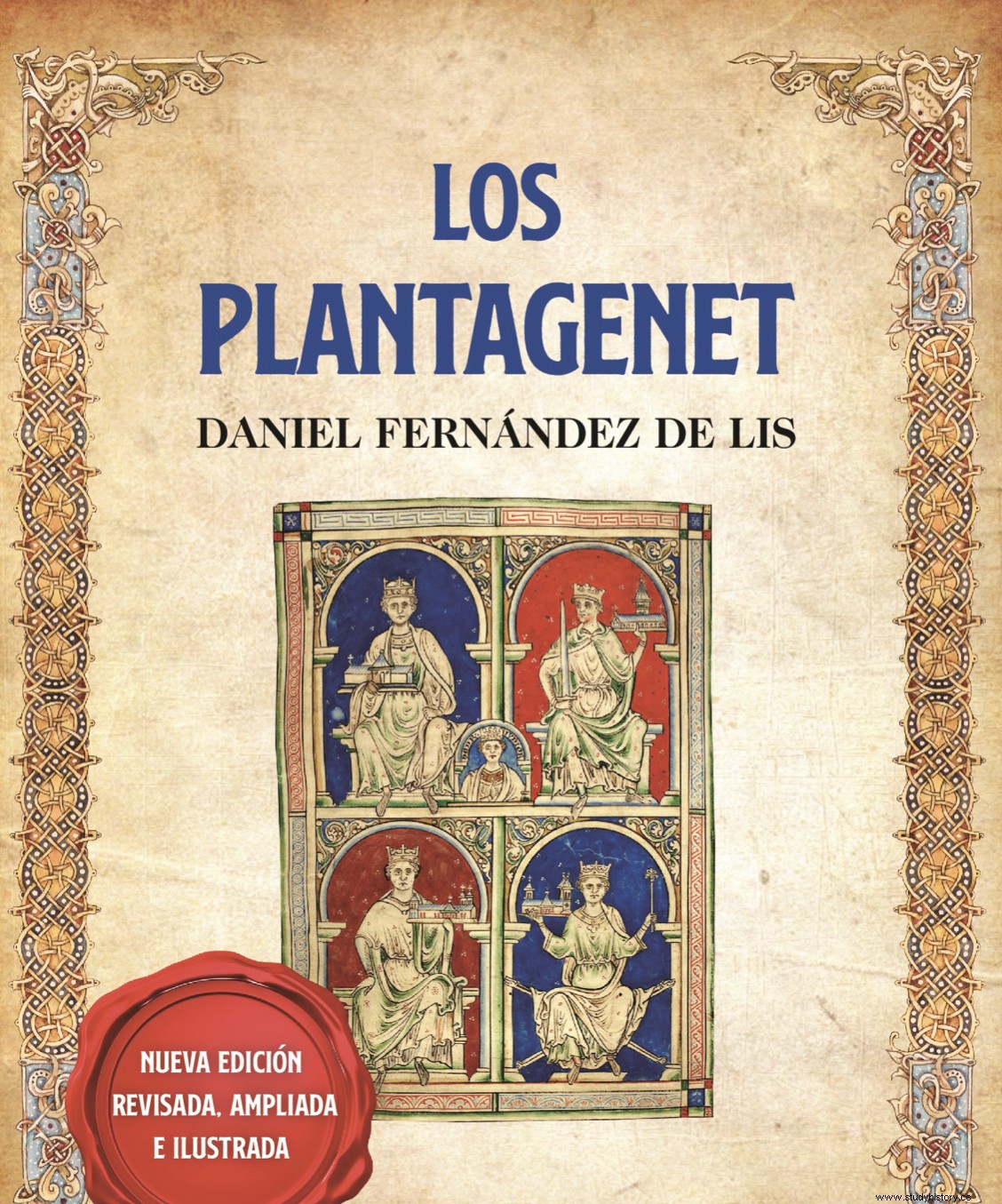 Entry taken from the book The Plantagenets
Entry taken from the book The Plantagenets
In the last of the series of posts that we are dedicating in the blog to the conquest of Wales by England (see the posts Edward I of England against Llywelyn Prince of Wales and Edward I, Wales and the Arthurian legends) we had noted that in March 1282 there was a new Welsh uprising in the areas dominated by the English. This rebellion took place simultaneously in several places, which suggests that it was a concerted movement. Its leader, however, was not the nominal Prince of Wales Llywelyn, but his brother Dafydd (already cited in previous entries on this subject). In fact, Llywelyn was initially unaware of the uprising and took some time before deciding to support it.
The main cause of the rebellion, in addition to Welsh discontent over the concessions they had been forced to make in the Treaty of Conwy (1277), were the problems that were being generated due to the presence in Wales of a high number of English settlers, which multiplied the clashes with the Welsh, as well as English officials and officers to guarantee the application of the laws. If a Welshman wanted to make a complaint or claim about the conduct of an Englishman, he had to go to courts that followed the English system of procedure and applied English law. This generated, in the eyes of the Welsh, a large number of injustices that affected land disputes even among the large landowners in the region. The main claim of the rebels, as Dafydd wrote to Eduardo, was to demand that the application of Welsh laws be maintained.
Edward, who had been content with the situation resulting from the Treaty of Conwy for the time being, was furious, especially when he learned that the leader of the rebellion was Dafydd, whom he had taken in when he was a fugitive from his brother with no hope of a future and whom he had left in a privileged position after the previous invasion of Wales. Thus, Eduardo set out to put an end to the Welsh problem once and for all.
It was a very lopsided fight; the English had a whole line of castles in Wales that Edward had ordered built or reinforced after conquering them and that served as a base for the invasion. In addition, Edward had learned from previous mistakes by English armies (most notably Grandfather John Landless and his father Henry III) how to defeat the Welsh by consolidating roads and opening great communication routes through the dense forests. from the country. In less than a year the English had conquered all of Wales and, with Llywelyn killed in a skirmish, the war turned into a manhunt until Dafydd was captured. The other rebels were pardoned, but Eduardo kept for the leader of the rebellion a fate of torture and execution that is very reminiscent of those who years later awaited another leader of an uprising against him; that rebellion took place in Scotland, and the ringleader went by the name of Willam Wallace... but that's another story.
Continuing with the policy of symbolic gestures of which we have already said that Eduardo was very supportive of him, he ordered the construction of a castle (Caernarfon) in a place of high significance for the Welsh; there were the remains of the Roman fort of Segontium, which Welsh tradition said had been built by a Roman emperor who had had a dream of building the most magnificent fort seen by man on that site.

Caernarfon was the most impressive of the castles that marked English rule over Wales. The king was there with his wife Eleanor of Castile when she gave birth to the future Edward II. Legend has it that at the birth of his son Edward said:"Didn't they want a prince born in Wales who didn't speak English? Well, they already have one." The anecdote is probably not true, since the first reviews that exist of it date back to the 16th century; furthermore, at the time of his birth Edward was not his father's heir, as his older brother Alfonso was still alive (some day we will tell the story of the relationship between Edward I of England and Alfonso X of Castile, who once knighted into English in Burgos).
Going back to the subject, in reality the formal designation of Edward as Prince of Wales, with the meaning that he has retained to date as heir to the crown of England, did not occur in the moment of his birth but seventeen years later in a session of the English parliament held in the city of Lincoln in the year 1301.
In any case, in this way Wales came to be definitively under English rule, although there was still one last attempt to recover Welsh independence that, although brief and dated much later, deserves to be reviewed. We will dedicate the next and last entry in this series dedicated to the conquest of Wales by England to this uprising.
Again, we refer for more information on this series of entries to Marc Morris's book Edward I, a great and terrible King.
